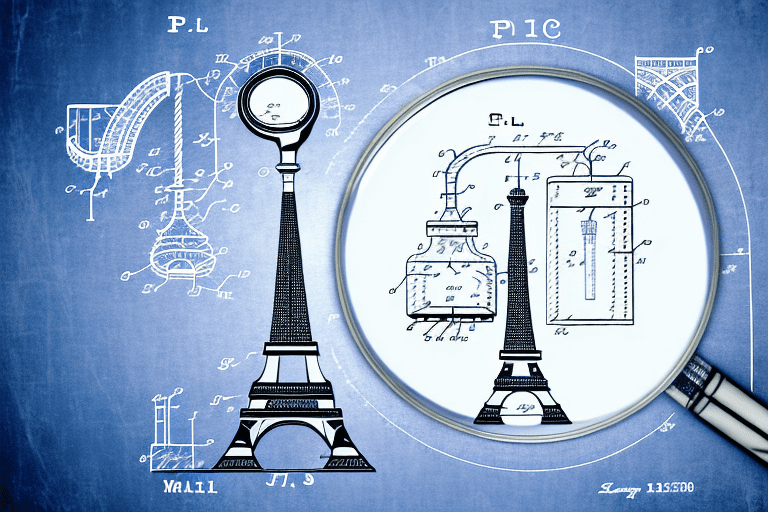The Paris Convention is a foundational international treaty that plays a crucial role in the world of patents. In this article, we will explore the history, purpose, and key provisions of the Paris Convention. We will also delve into the intricacies of obtaining a patent, the significance of the Manual of Patent Examining Procedure (MPEP), and the importance of the Patent Bar. Let’s embark on this journey to unravel the secrets of the Paris Convention, patents, the MPEP, and the Patent Bar.
Understanding the Paris Convention
The Paris Convention, established in 1883, is an international treaty aimed at harmonizing and protecting intellectual property rights across different countries. Its primary objective is to promote the exchange of inventions by providing inventors with a framework to secure their rights globally. By creating a standardized set of rules and procedures, the Paris Convention enables inventors to file patent applications in multiple countries simultaneously.
The Paris Convention is a landmark agreement that has played a crucial role in shaping the modern intellectual property landscape. It has provided inventors with a level of protection and legal certainty that was previously unavailable on such a global scale. This has greatly incentivized innovation and the sharing of ideas across borders.
History and Purpose of the Paris Convention
The history of the Paris Convention dates back to the 19th century when countries recognized the need for international cooperation in preserving intellectual property rights. The treaty’s purpose is to facilitate and encourage innovation by offering inventors reliable patent protection worldwide. It promotes fair competition, prevents discrimination against foreign inventors, and ensures a level playing field for all countries.
The Paris Convention was a response to the growing need for a unified approach to intellectual property rights. In the 19th century, as industrialization spread across the globe, inventors faced significant challenges in protecting their creations beyond their home countries. The Paris Convention sought to address these challenges by establishing a framework that would enable inventors to secure their rights in multiple countries.
Key Provisions of the Paris Convention
One of the fundamental provisions of the Paris Convention is the concept of priority. Inventors who initially file a patent application in their home country can claim priority when filing in other signatory countries within a specific timeframe. This provision allows them to secure their rights and prevents others from patenting the same invention in the meantime.
The concept of priority has been instrumental in facilitating the global patent system. It has allowed inventors to strategically plan their patent filings, ensuring that they can protect their inventions in multiple countries without the risk of losing their rights due to a third party filing a similar patent application.
Additionally, the Paris Convention establishes the principle of national treatment, which ensures that foreign inventors receive the same legal protection and advantages as domestic inventors. It prohibits discriminatory practices and guarantees equal rights for all inventors, regardless of their nationality.
The principle of national treatment has been a cornerstone of the Paris Convention, promoting fairness and equality in the protection of intellectual property rights. It has fostered an environment where inventors from different countries can compete on a level playing field, encouraging innovation and cross-border collaboration.
Furthermore, the treaty encourages cooperation among member countries by promoting the exchange of information and expertise. It establishes mechanisms for sharing knowledge and facilitating the transfer of technology, ultimately fostering innovation on a global scale.
The exchange of information and expertise facilitated by the Paris Convention has had far-reaching effects on the progress of innovation. It has allowed inventors to learn from each other’s experiences, build upon existing knowledge, and develop new and improved technologies. This collaborative approach has been crucial in driving advancements in various fields, from medicine to technology.
The Paris Convention and International Patent Law
The Paris Convention provides the foundation for international patent law. It serves as a framework for other global agreements and treaties, such as the World Intellectual Property Organization (WIPO) Patent Cooperation Treaty (PCT) and the Agreement on Trade-Related Aspects of Intellectual Property Rights (TRIPS). These agreements build upon the principles established by the Paris Convention and further strengthen the protection and enforcement of patent rights worldwide.
The Paris Convention’s influence extends beyond its immediate provisions. It has paved the way for the development of a robust international patent system, ensuring that inventors can secure their rights and benefit from their creations in a global marketplace. The subsequent agreements and treaties that have built upon the Paris Convention have further refined and expanded the scope of intellectual property protection, adapting to the evolving needs of the global economy.
In conclusion, the Paris Convention has been instrumental in harmonizing and protecting intellectual property rights across borders. Its provisions, such as priority and national treatment, have provided inventors with the confidence and legal framework to secure their rights globally. Furthermore, the treaty’s emphasis on cooperation and knowledge exchange has fostered innovation on a global scale. As the foundation for international patent law, the Paris Convention continues to play a vital role in shaping the modern intellectual property landscape and promoting innovation worldwide.
The Intricacies of a Patent
A patent is an exclusive right granted to inventors, providing them with legal protection for their inventions. It grants inventors the right to prevent others from making, using, or selling their invention without their permission for a specific period.
Obtaining a patent involves a complex process that requires inventors to navigate various stages and considerations. Understanding the nuances and intricacies of patents is crucial for inventors looking to protect their intellectual property and capitalize on their innovative ideas.
Defining a Patent: What It Is and What It Isn’t
A patent is not an absolute monopoly; rather, it is a limited right granted by the government to encourage innovation. It is important to understand that a patent does not confer the right to use the invention but rather the right to exclude others from using it. This distinction ensures that inventors can reap the benefits of their creations while allowing for further advancements and collaborations in related fields.
Moreover, patents serve as a powerful tool for inventors to attract investors, secure funding, and establish their position in the market. With a patent in hand, inventors gain a competitive advantage and can negotiate licensing agreements or partnerships with other businesses.
The Process of Obtaining a Patent
The process of obtaining a patent can be complex and involves several stages. It typically begins with conducting a thorough search to ensure that the invention is new and non-obvious. This search helps inventors assess the existing prior art, which refers to any publicly available information that may impact the patentability of their invention.
Once the novelty is confirmed, inventors draft a patent application, including detailed descriptions, drawings, and claims that define the scope of their invention. These components are crucial as they provide a clear and comprehensive understanding of the invention, enabling patent examiners to evaluate its uniqueness and inventiveness.
After filing the application, it undergoes examination by a patent office to assess its patentability and compliance with legal requirements. This process often involves back-and-forth communication with the examiner, addressing any objections or rejections raised. Inventors may need to provide additional evidence or arguments to support the patentability of their invention.
Furthermore, inventors must navigate the complex landscape of patent laws and regulations, which vary from country to country. They need to be aware of different patent systems, filing deadlines, and the specific requirements of each jurisdiction in which they seek protection.
Finally, if the invention meets all requirements and successfully overcomes any challenges, the patent is granted. It is essential to note that patent protection is territorial, and inventors must decide in which countries they wish to seek protection. This decision involves considering market potential, manufacturing capabilities, and potential licensing opportunities in different regions.
The Role of the Paris Convention in Patent Protection
The Paris Convention plays a vital role in patent protection by offering inventors a centralized mechanism to secure their rights across multiple countries. Its provisions, such as the priority system, simplify and streamline the process of filing patent applications in different jurisdictions.
The priority system allows inventors to claim priority based on their initial filing in one country and subsequently file applications in other countries within a specified timeframe, typically 12 months. This system provides inventors with a grace period to evaluate the commercial viability of their invention before committing to the cost and effort of filing in multiple jurisdictions.
Additionally, the national treatment principle ensures that inventors receive consistent and fair treatment regardless of the country in which they file their applications. This principle prevents discrimination against foreign inventors and ensures that they enjoy the same rights and benefits as domestic inventors in each member country of the Paris Convention.
By participating in the Paris Convention, inventors can streamline their international patent filing strategy, reduce costs, and protect their inventions more efficiently. This global framework promotes innovation and encourages inventors to share their knowledge and expertise across borders.
In conclusion, patents are not only legal protections for inventors but also valuable assets that can drive economic growth, foster innovation, and shape industries. Understanding the intricacies of the patent process, the importance of patent protection, and the international frameworks that support inventors is crucial for anyone involved in the world of innovation.
A Deep Dive into the MPEP
The Manual of Patent Examining Procedure (MPEP) is a comprehensive guidebook that provides guidance and instructions to patent examiners conducting patent application examinations. It serves as a reference tool and outlines the procedures, rules, and legal standards that govern patent examination within the United States Patent and Trademark Office (USPTO).
The MPEP: An Overview
The MPEP is a vital resource for patent examiners, inventors, patent attorneys, and anyone involved in the patent application process. It covers various aspects, including patentability requirements, examination guidelines, and post-grant proceedings. Its purpose is to ensure consistency and uniformity in the examination process and to clarify the standards used in evaluating the patentability of inventions.
Understanding the MPEP’s Role in Patent Examination
The MPEP sets forth the procedures that patent examiners follow when reviewing patent applications. It provides specific guidelines on how to assess patent novelty, non-obviousness, and utility, among other requirements. The MPEP serves as a valuable tool for patent examiners to make informed decisions and maintain consistency when applying legal standards to patent applications.
How the MPEP Interacts with the Paris Convention
The MPEP incorporates the principles and requirements of the Paris Convention into its guidelines and practices. It ensures that patent applications filed under the Paris Convention receive consistent treatment and examination within the USPTO. By adhering to the Paris Convention’s framework, the MPEP facilitates an efficient and standardized approach to patent examination, benefiting inventors seeking patent protection in the United States.
Navigating the Patent Bar
The Patent Bar refers to the examination conducted by the USPTO to determine the qualifications of individuals seeking to become registered patent agents or patent attorneys. Successfully passing the Patent Bar is a prerequisite for practicing before the USPTO and representing inventors in patent matters.
The Importance of the Patent Bar
The Patent Bar exam is crucial for individuals aspiring to specialize in patent law and represent clients in patent-related matters. By passing the exam, candidates demonstrate their knowledge and understanding of patent law, practice, and procedures. It serves as a measure of competence and ensures that patent practitioners have the necessary skills to navigate the complex world of patents effectively.
Preparing for the Patent Bar Exam
Preparing for the Patent Bar exam requires a comprehensive understanding of patent law, rules, and procedures. Candidates often enroll in specialized courses or study programs that focus on the exam’s content and provide practice materials. It is advisable to dedicate sufficient time and effort to studying, familiarizing oneself with past exam questions, and seeking guidance from experienced professionals.
The Paris Convention’s Influence on the Patent Bar
The Paris Convention’s principles and provisions have a significant impact on the practice of law before the USPTO and, subsequently, the Patent Bar exam. Knowledge of the Paris Convention is essential for patent practitioners as it affects the filing and prosecution of patent applications. Understanding how the Paris Convention interacts with the US patent system is crucial for successfully navigating the Patent Bar exam and representing inventors effectively.
In Conclusion
The Paris Convention, patents, the MPEP, and the Patent Bar are interconnected elements that shape the world of intellectual property. By exploring the history, purpose, and provisions of the Paris Convention, understanding the intricacies of obtaining a patent, delving into the role of the MPEP in patent examination, and recognizing the importance of the Patent Bar, we have gained valuable insights into this fascinating field. As innovation continues to drive progress, it is essential to stay informed and knowledgeable about these crucial aspects of intellectual property law.






